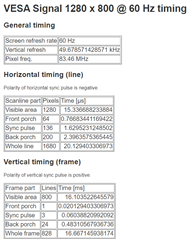Hi Expert,
I see below e2e thread and have some question. For each port, there is a buffer and FIFO for two line data capacity. I see in the table that front porch, back porch and sync pulse. Aren't they for RGB signal? Why they are for VASE? How to get the PIXEL clock?
I also think transmit a long packet also cost some time? Is it very little so you omit it? Thanks.
BR,
Elec Cheng




